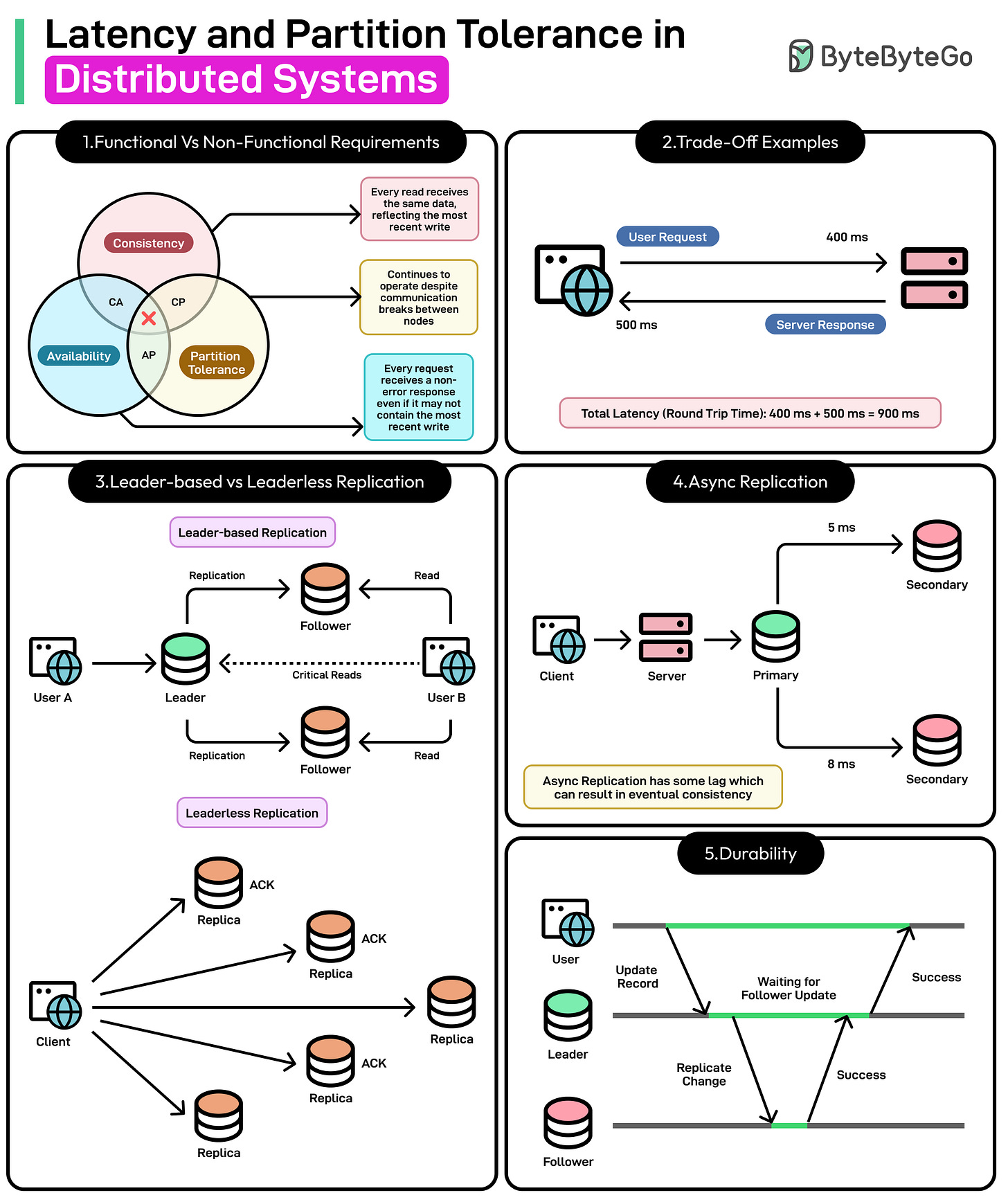Dark Side of Distributed Systems: Latency and Partition Tolerance
Distributed systems are collections of independent computing resources that work together to present a unified, cohesive service or application to the user.
Rather than relying on a single powerful machine, these systems spread workloads across multiple nodes, often deployed across different servers, regions, or continents. Building distributed systems is popular because it offers improved scalability, enabling organizations to handle growing traffic by adding more nodes as needed. It also enhances fault tolerance. If one node goes down, the system can often continue serving requests, minimizing downtime and user impact.
However, with these benefits come complexities—what many refer to as the “dark side” of distributed systems.
Coordinating multiple nodes over unreliable networks introduces challenges around data consistency, system synchronization, and partial failures.
Developers must navigate layers of complexity that don’t exist in a single-machine environment, such as dealing with unpredictable message delays and deciding how to handle conflicting writes.
Two critical considerations that consistently arise in distributed systems are latency and partition tolerance.
Latency, or the delay in communication between nodes, can degrade user experience and complicate real-time processing. Partition tolerance, the capacity of a system to continue operating despite communication breakdowns among nodes, highlights the trade-offs between maintaining availability and ensuring data consistency.
In this article, we’ll understand how latency and partition tolerance impact distributed systems and discuss strategies for addressing them effectively.
Understanding the CAP Theorem
Keep reading with a 7-day free trial
Subscribe to ByteByteGo Newsletter to keep reading this post and get 7 days of free access to the full post archives.


